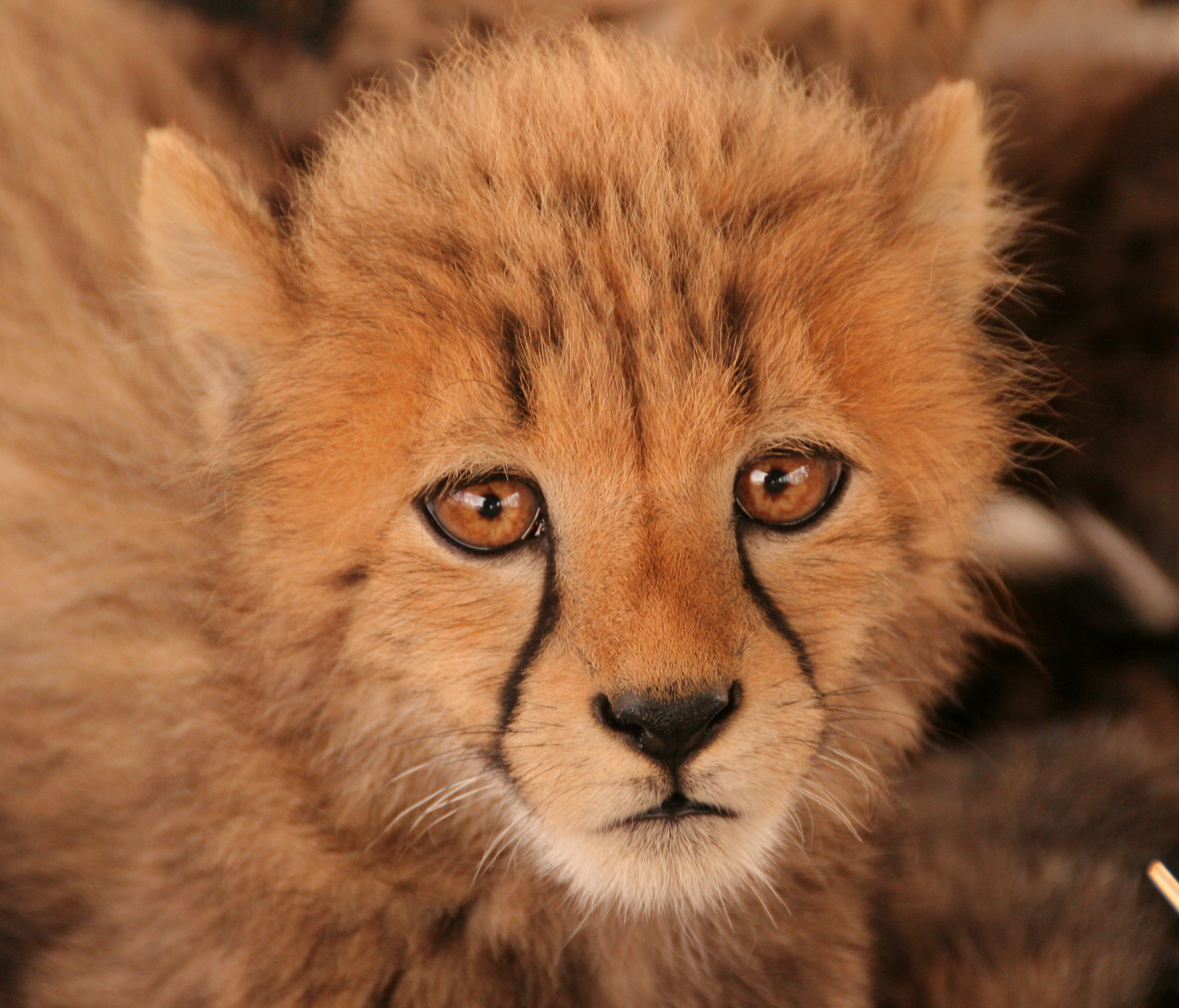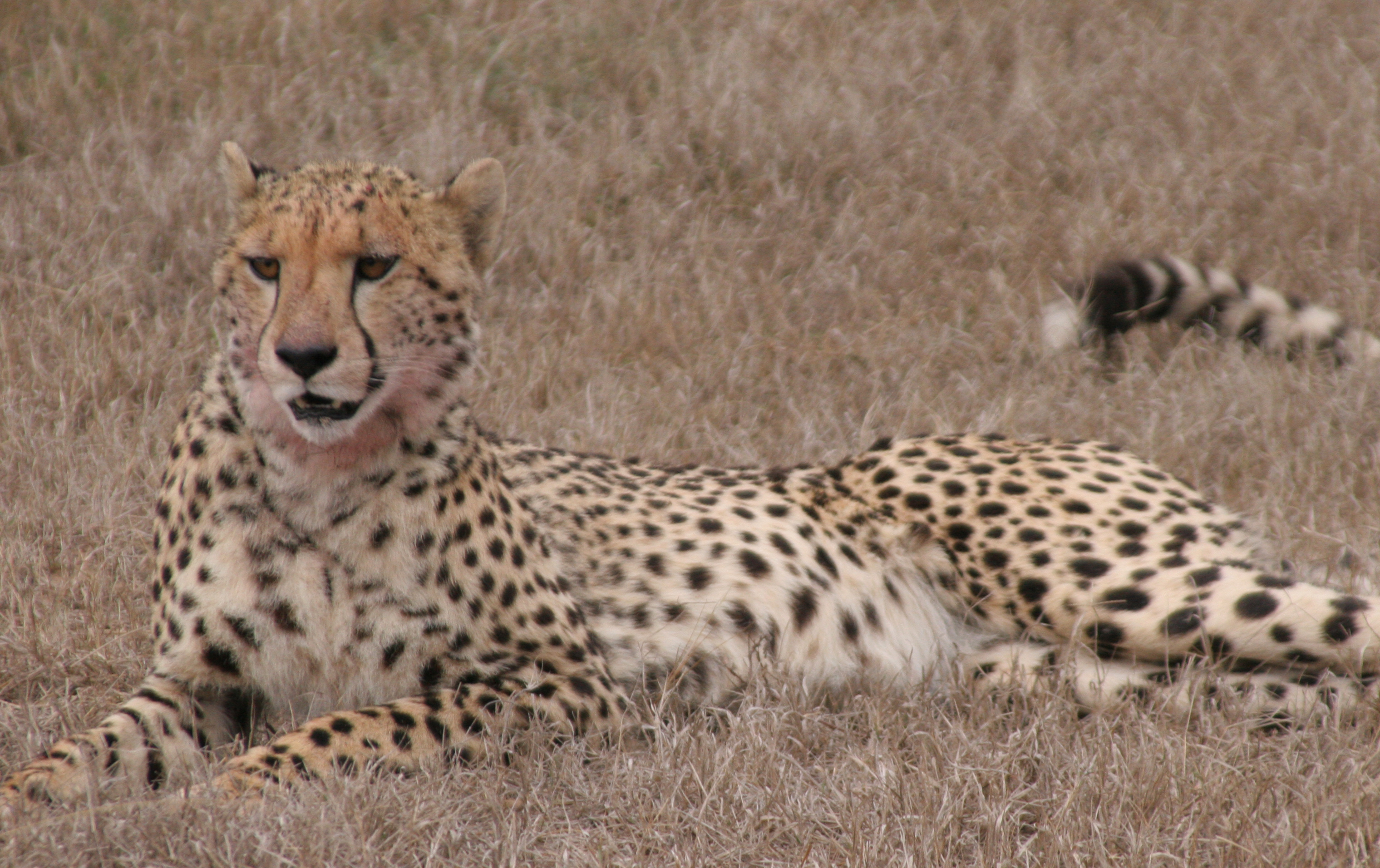 The genetics of wild cheetah (Acinonyx jubatus) populations has a special significance for me. In fact, it could be said that the population genetics of cheetahs changed my life. I first learned about the low genetic variability in cheetahs in a darkened lecture hall at Iowa State University in 1988. I was so fascinated by what I learned in those lectures about genetics and its importance in conservation efforts that I eventually changed my major to Genetics. “The Cheetah Papers” as a colleague calls them, were, and perhaps still are, common teaching tools for biology and genetics classes. And why not? The results were amazingly cool, if a bit disturbing. Imagine a population that, through a series of natural events over thousands of years, had become so genetically similar to one another as to be almost clonal.
The genetics of wild cheetah (Acinonyx jubatus) populations has a special significance for me. In fact, it could be said that the population genetics of cheetahs changed my life. I first learned about the low genetic variability in cheetahs in a darkened lecture hall at Iowa State University in 1988. I was so fascinated by what I learned in those lectures about genetics and its importance in conservation efforts that I eventually changed my major to Genetics. “The Cheetah Papers” as a colleague calls them, were, and perhaps still are, common teaching tools for biology and genetics classes. And why not? The results were amazingly cool, if a bit disturbing. Imagine a population that, through a series of natural events over thousands of years, had become so genetically similar to one another as to be almost clonal.
Still, if science teaches us nothing else, it teaches us that there is always more to the story. And new research published in Molecular Ecology (1) offers a new chapter to the cheetahs’ story. The authors investigated the divergence and genetic diversity within and between Asiatic (A.j. venaticus) and African cheetah populations. Unlike past studies, which only looked at sub-Saharan cheetah populations (A.j. jubatus and A.j. raineyi), this most recent study looked at all currently existing populations (i.e., sub-Saharan, North-East African [A.j. soemmeringii] and Asiatic) and also included samples from archaeological sites as well as from museum collections.
Using both mitochondrial DNN (mtDNA) and nuclear, microsatalite, DNA, the authors found a higher rate of genetic variation in cheetah populations than previous reports had described. While encouraging, these results aren’t surprising since this study included populations that had never been analyzed before. As seen in other studies, the mtDNA analysis showed too little variation to clearly separate the sub-Saharan population into two subspecies. However, both microsatellite and minisatellite analysis showed variation that supports the separation of this population into two subspecies (A.j. jubatus and A.j. raineyi). Further, the results clearly distinguished the North-East African population from both the sub-Saharan and the Asiatic populations. All three populations were shown to be long-term geographic isolates with unique evolutionary histories.
These results put a new wrinkle in the conservation management of the cheetah. Typically, conservation strategies are based on the subspecies taxonomy. This has rarely been a consideration for the cheetah because they were believed to be so genetically similar. The current approach might still be valid for the two sub-Saharan subspecies. It can no longer be considered so for the North-east African and Asiatic subspecies, which are distinct populations in need of their own conservation strategy.
While this research shows that genetic diversity does exists across the cheetah populations of Asia and Africa, it does nothing to ease the concern for this species’ survival. In particular, the Asiatic cheetahs, with their dangerously low numbers (70-110 individuals), showed a low genetic diversity, and although there is little indication that inbreeding depression affects cheetahs, a further decline in their numbers might mean more extreme conservation measures are needed if this subspecies is to survive. Further complicating the plight of the Asiatic cheetahs, the authors did not detect any historical gene flow between the African and Asian cheetahs. This suggests that transplanting individuals from any of the African subspecies may not be a viable path to saving these critically endangered animals.
 Not surprisingly, the story of the cheetah is more complicated than I was taught all those years ago in college. Although it no longer makes such a tidy lesson in population biology and genetics, the more complete story offers just an important a lesson. Population genetics, like all fields of science, is fluid and dynamic. As scientists, we need to be flexible; we need to be able and willing to adjust our approach and assumptions when new information becomes available. Above all else, we need to remain aware that what we know now is almost certainly not the whole story.
Not surprisingly, the story of the cheetah is more complicated than I was taught all those years ago in college. Although it no longer makes such a tidy lesson in population biology and genetics, the more complete story offers just an important a lesson. Population genetics, like all fields of science, is fluid and dynamic. As scientists, we need to be flexible; we need to be able and willing to adjust our approach and assumptions when new information becomes available. Above all else, we need to remain aware that what we know now is almost certainly not the whole story.
 Reference
Reference
- Charruau P, Fernandes C, Orozco-Terwengel P, Peters J, Hunter L, Ziaie H, Jourabchian A, Jowkar H, Schaller G, Ostrowski S, Vercammen P, Grange T, Schlötterer C, Kotze A, Geigl EM, Walzer C, & Burger PA (2011). Phylogeography, genetic structure and population divergence time of cheetahs in Africa and Asia: evidence for long-term geographic isolates. Molecular ecology, 20 (4), 706-24 PMID: 21214655
